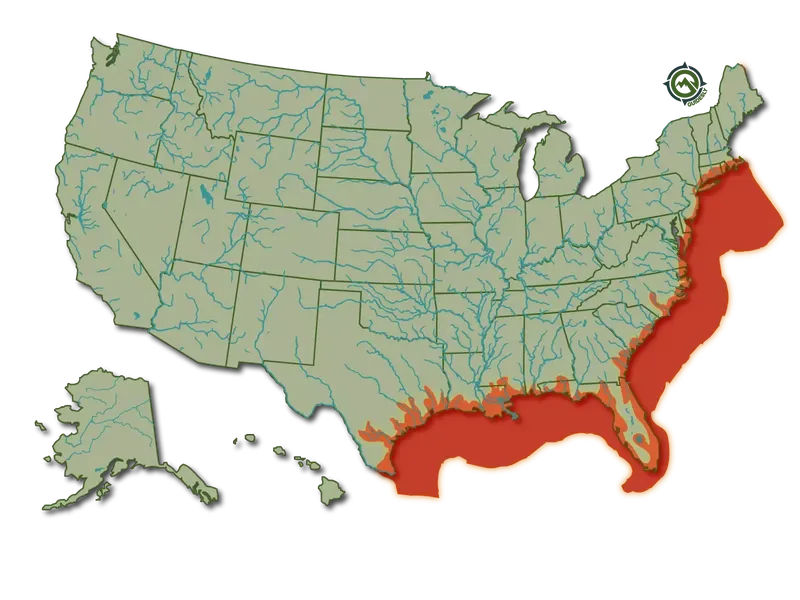Sea Trout

Species Details
Salmo Trutta
Salmonidae
Salmoniformes
Inshore, Nearshore, Covered River
1 - 6 lbs.
20" - 55"
How Do You Catch Sea Trout?
To catch sea trout, use light tackle with small jigs or live bait such as shrimp or pinfish. Cast your bait and retrieve slowly, making sure to vary your retrieve speed and use a twitching motion to mimic the movement of live bait. In colder months, try using lures that imitate small baitfish.
Sea Trout (Salmo trutta) Fish Description
Also known as Spotted Sea Trout or Speckled Trout, Sea Trout are anadromous, meaning they migrate from the sea to spawn in freshwater.
The most distinct feature of Sea Trout is their torpedo-shaped (fusiform) and elongated body. They are similar to brown trout but have a much more silvery appearance. They have an adipose fin which is a feature present in all species of trout. They have numerous spots all over the body.
This fish closely resembles the Rainbow Trout and Atlantic Salmon. What makes it different from the others is that the rainbow trout possess black spots on its tail, whereas the Atlantic Salmon has no red tinge on its adipose fin.
Sea Trout Diet and Size
Sea Trout love to feast on shrimps, prawns, small crabs, and fish. They also feed on zooplankton and zoobenthos.
Adult Sea Trout can grow from 14 to 24 inches long and weigh a little over one pound to 5 pounds. Some Sea Trout were found to have weighed up to 40 pounds in certain instances.
Interesting Facts About the Sea Trout
- As an anadromous fish species, the Sea Trout shares this characteristic with the Sea Lamprey, Striped Bass, and Salmon.
- Some salmonids like the Cutthroat Trout (Oncorhynchus clarkii), Arctic Char (Salvelinus alpinus alpinus), Coho Salmon (Oncorhynchus kisutch), Dolly Varden (Salvelinus malma), and Brook Trout (Salvelinus fontinalis) are also commonly called Sea Trout.
- Male Sea Trout who are in breeding season develop a skype, which is a hook-like protrusion on their lower jaw.
- When in freshwater, Sea Trout are olive in color, whereas they are silvery when they are in salt water.
- Young Sea Trout remain in freshwater for almost five years before going back to sea; during this journey, they can travel up to 40 kilometers in a day.
- The Sea Trout is considered the first fish to have undergone artificial reproduction; the pilot activity is said to have occurred in 1739 in Germany.
Sea Trout — Fishing Techniques
Sea Trout are considered common table fare; they are usually processed and frozen. Because of this, this species has become popular among commercial fishers. Freshwater anglers basically catch Sea Trout via fly fishing.
Commercial anglers usually use spinners, lures, and live bait like herring and mackerel strips dipped into the water reaching the sea bed. Since Sea Trout are good fighters who always like to bait, you are recommended to utilize artificial lures; the most effective are jerk baits, topwater plugs, plastic shrimp, spoons, and plastic tail grub jigs.
When sea trout fishing, look for them in grass flats or shallow waters at night. If you have a hard time, you can try trolling at idle speed along these areas. Remember that during winter, Sea Trout form big schools and are usually found in waters as deep as 164 feet.
Considered one of the most highly rated fish, the Sea Trout is prized among anglers. In some countries like Germany, however, this species is protected and highly regulated.
Is Sea Trout Good to Eat?
Sea trout or Speckled trout is a popular game fish found in many coastal areas worldwide. One question often arises is whether sea trout is good to eat. It's important to understand that sea trout can vary significantly in taste depending on where they were caught and what they've been feeding on. Generally speaking, sea trout has a mild and delicate flavor that many people find appealing. Additionally, because sea trout are typically smaller than other salmonids like salmon or steelhead, their flesh tends to be more tender and less oily.
Speckled Trout are a tasty fish that is very good to eat with moderate-flaky, white meat. It is softer than other inshore fish, so it is important not to overcook it, or it will become very mushy.
Regarding nutrition, sea trout is an excellent source of protein and omega-3 fatty acids. These nutrients have been linked to various health benefits, including improved brain function and heart health.
Sea Trout Habitat and Distribution

Sea Trout thrive best in cold lakes and rivers (they like temperatures between 33.8 to 80.6°F); they spawn on the gravel bottoms of streams and rivers. They usually spawn in November to December. Sea trout in South Carolina typically live in estuaries all year, but they may congregate to overwinter in deeper channels and rivers or the main estuary, potentially increasing fishing pressure.
Sea Trout have vast and fairly distributed populations in Europe, especially along the coasts of Iceland, the UK, and the Atlantic and Baltic areas. They are abundant in the Caspian and Black Seas but are not present in the Mediterranean. Certain populations of Sea trout have also been reported in the US, particularly in the Canadian rivers, Columbia River, and the Atlantic and Pacific coasts.







